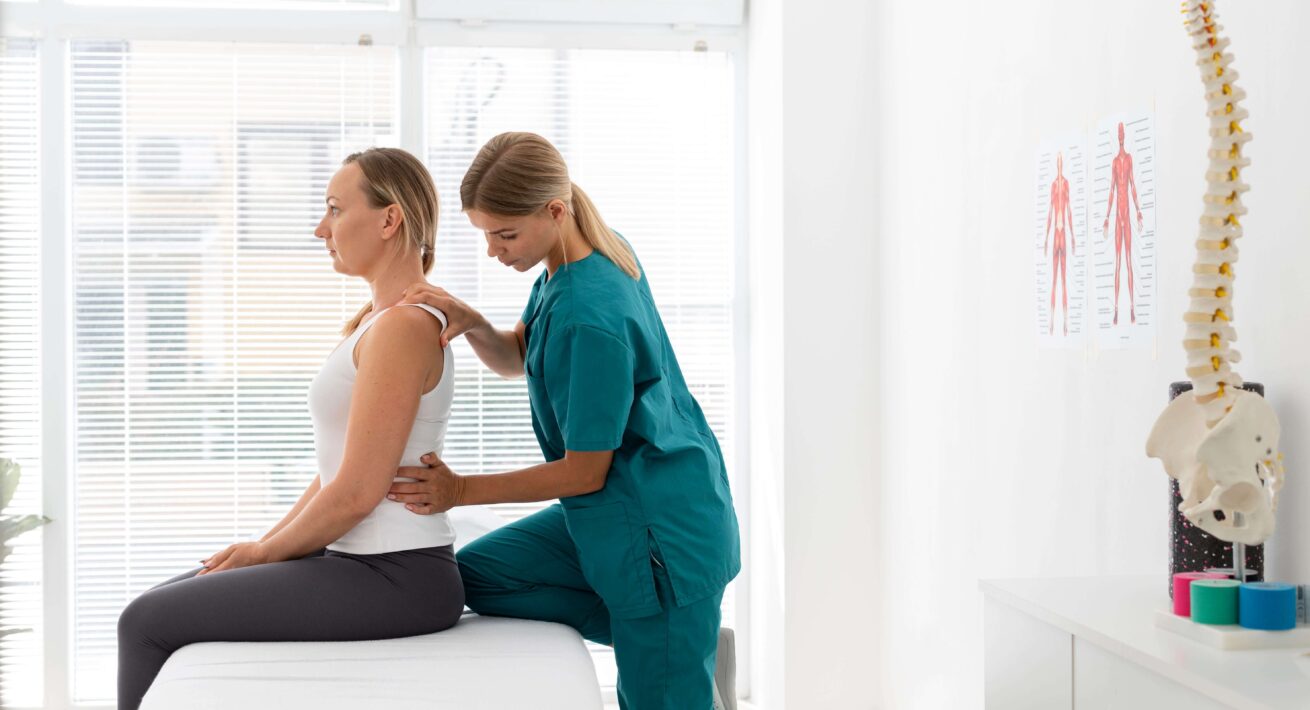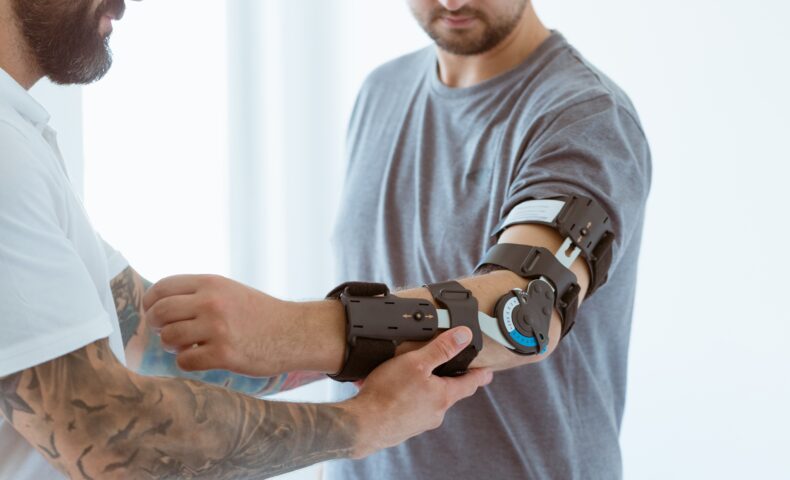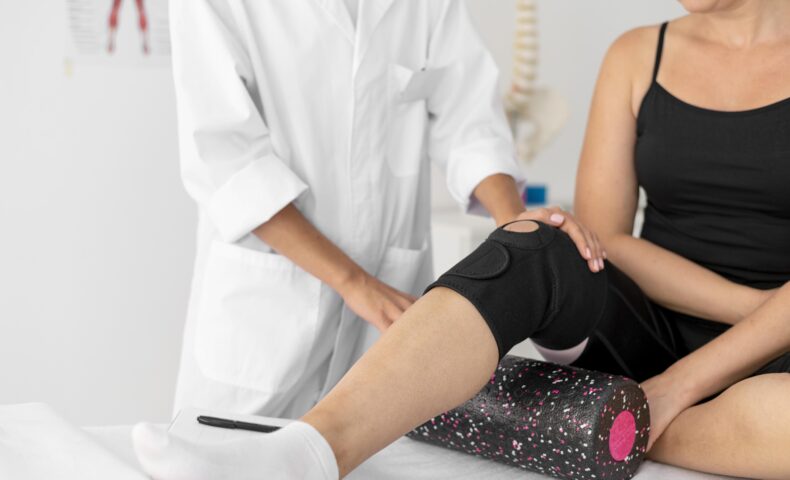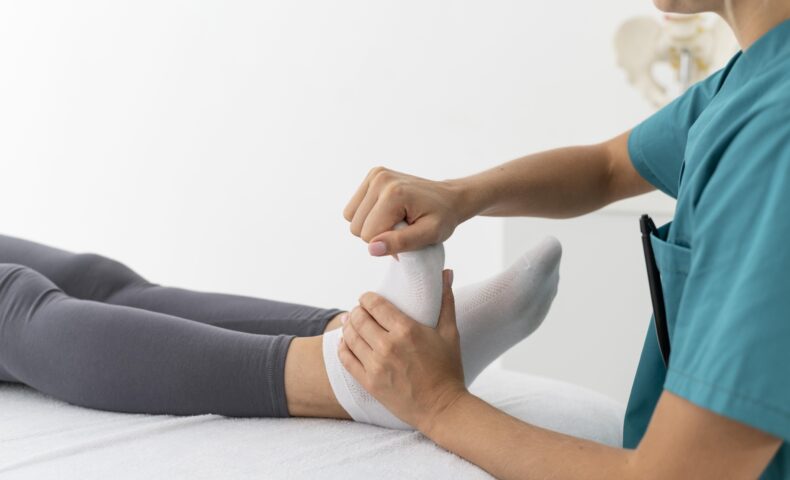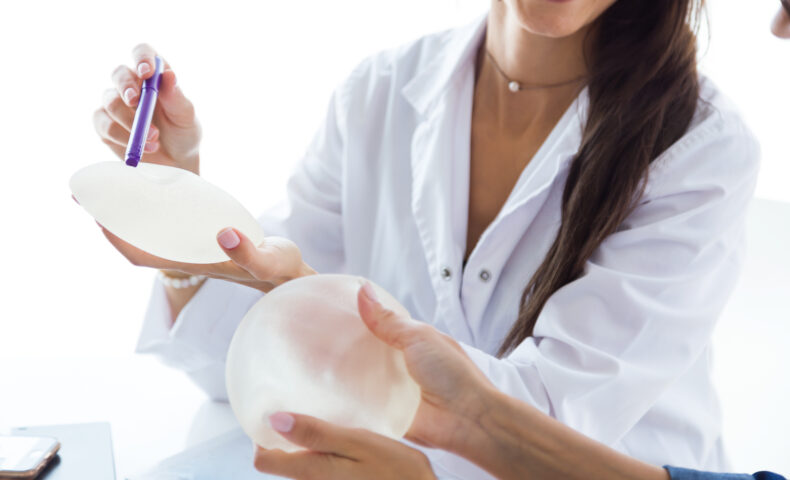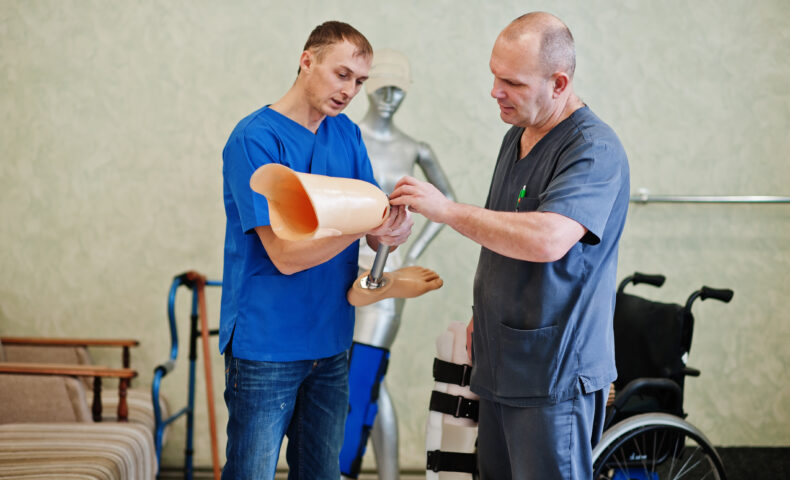Detecting and monitoring scoliosis is essential for the well-being of patients, particularly from an early age. In this article, we explore how a 3D torso scan can be used to diagnose and monitor a patient with scoliosis. Discover the innovative solution from US company NSite Medical, which combines artificial intelligence algorithms with the MyFit Solutions 3D torso scan experience.
From detection to follow-up and treatment of scoliosis
What is scoliosis?
This is a medical condition that involves a deformation of the spine in all three planes of space. This deformation may take the form of cervical curvature, thoracic curvature and lumbosacral curvature of the spine. These unusual curvatures can affect the vertebrae, leading to structural changes in the thorax, abdomen and other paravertebral areas.
There are several types of scoliosis, including juvenile scoliosis, which is characterized by a deformation of the spine. This deformity can cause asymmetry of the trunk and significant changes to the pelvis. Patients suffering from this condition may experience a variety of symptoms, including low-back pain, gibbosity (a hump-shaped deformity of the back) and other pathology-related problems.
What are the different types of scoliosis?
There are several distinct types of scoliosis, each with its own characteristics and origins.
- Idiopathic scoliosis:
It is the most common form of scoliosis. It occurs mainly in adolescents and, in many cases, its exact cause remains a mystery. Idiopathic scoliosis can be classified into three sub-categories according to age of onset: infantile, juvenile and adolescent.
- Neuromuscular scoliosis:
They develop as a result of muscle or nerve abnormalities. It is usually associated with medical conditions such as muscular dystrophy, cerebral palsy or myopathy. These conditions lead to muscle weakness and imbalances, which can cause spinal deformity.
- Congenital scoliosis:
It is present from birth and is caused by abnormalities in the development of the vertebrae of the spine. The vertebrae may be malformed, fused or crowded. Congenital scoliosis is often diagnosed early in life, as it is present from birth.
- Degenerative scoliosis:
It develops in adults, generally after the age of 40. It is mainly linked to degeneration of the intervertebral discs and joints of the spine. Loss of elasticity in the supporting structures results in curvature of the spine.
Ultimately, these different types have specific characteristics. Correct diagnosis is essential to determine the most appropriate treatment.
How can I know if I have scoliosis?
X-rays of the spine, in particular anterior-posterior and lateral views, enable healthcare professionals to measure the Cobb angle. This angle is a key indicator of the severity of scoliosis and is used to plan treatment. In addition, the Risser Test is performed to assess the maturity of the hip bones. This helps doctors determine whether it is likely to progress.
However, it is crucial to note that frequent exposure to radiation, particularly in growing children, can present health risks. The major disadvantage of X-rays lies in their frequent use. This exposes patients, especially children, to potentially harmful doses of ionizing radiation.
Who should be seen for scoliosis?
Although scoliosis is often detected by the attending physician, school doctor or sports physician, follow-up and treatment are generally carried out by a range of professionals, such as physiotherapists.
Is it possible to correct scoliosis?
The correction depends on several factors: its type, severity and the patient’s age.
The following correction approaches are commonly used:
Rehabilitation by a physiotherapist:
For mild to moderate scoliosis, rehabilitation by a physiotherapist can be an effective option. Specific exercises aim to strengthen back muscles, improve posture and reduce spinal curvature. A qualified physiotherapist can design a personalized program based on the patient’s needs.
Wearing orthopedic insoles:
In some cases, particularly when scoliosis is associated with an imbalance in the lower limbs, wearing orthopedic insoles can help correct posture. These insoles are designed to redistribute pressure on the feet and legs, which can help reduce spinal deformity.
Medical Corset:
For more severe scoliosis, particularly in growing adolescents, a medical corset may be prescribed. The aim of the corset is to keep the spine in the correct position and prevent further curvature. However, it is essential to note that corsets are generally more effective in slowing the progression of scoliosis than in correcting it completely.
However, in some very severe cases, or when other treatments have failed to produce the desired results, surgery may be necessary. Scoliosis surgery generally involves spinal fusion, in which rods, screws and bone grafts are used to stabilize the spine and reduce curvature. This procedure is generally reserved for severe scoliosis.
NSite Medical X MyFit Solutions: Mobile diagnosis and monitoring of scoliosis
Who is Nsite Medical?
NSite Medical is a renowned company based in the United States. It is a spin-off from the prestigious Stanford University. NSite Medical is a leader in the field of scoliosis diagnosis and monitoring, thanks to its advanced expertise and commitment to innovative treatment of scoliosis diagnosis and monitoring. The National Scoliosis Clinic (NSC) powered by Nsite Medical is revolutionizing the field of scoliosis care. It is developing a scanning technology based on artificial intelligence (AI) algorithms that is non-invasive and radiation-free. This could soon pave the way for screening and monitoring patients in clinics or directly at home!
Nsite Medical X MyFit Solutions: obtain 3D torso scan
NSite Medical is fundamentally revolutionizing the way this medical condition is diagnosed and monitored in patients of all ages. This innovative technology is made possible by the 3D torso scans provided by MyFit Solutions. NSite cutting-edge artificial intelligence algorithms are combined with MyFit Solutions 3D scanning technology.
These scans are packed with highly accurate information. They show the curvature of the spine, the angle of Cobb, and other parameters essential for a complete assessment
Thanks to this innovative technology, NSite Medical provides healthcare professionals with more precise and objective information. And so develop treatment plans tailored to each individual patient.
Finally, the MyFit Solutions mobile 3D scan paves the way for early diagnosis that is universal and accessible anywhere. This gives scoliosis sufferers the best chance of correction and treatment. Access to a qualified professional and an X-ray scanner are no longer limiting conditions. Combining the expertise of NSite Medical with the technological innovation of MyFit Solutions is proving to be a major step forward in the management of this disease. So how does it work?
How can scoliosis be diagnosed with a smartphone?
3D scans of the torso are now possible. And it’s easy to do with optimum quality and precision. MyFit Solutions equips healthcare professionals to carry out torso scans on their patients in just a few simple steps.
In fact, it’s a step-by-step guided scan to ensure a successful scan first time. This technological advance offers healthcare professionals a practical and reliable method of detecting and monitoring scoliosis.
MyFit Solutions’ 3D scanning solution for diagnosing, monitoring or manufacturing medical products offers a number of advantages:
- Accessibility: scans available everywhere, by everyone, enabling remote monitoring.
- Cost reduction: a 3D scanning solution available via the most common object: the smartphone. Simpler, less expensive equipment.
- Precision: Diagnosis and follow-up thanks to scaled 3D scans with exact dimensions.
Just like Nsite, you would like to adopt mobile 3D scanning to detect, monitor and treat your patients’ scoliosis?

